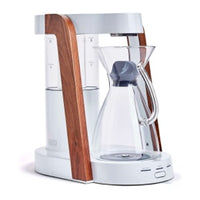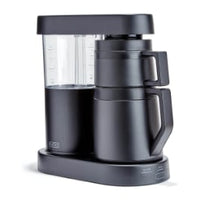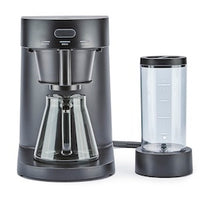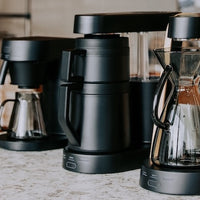Why Coffee Always Tastes Different on Vacation
Key Takeaways
-
Changes in water quality and mineral content affect coffee flavor dramatically
-
Altitude and air pressure influence extraction and taste perception
-
Different brewing equipment and unfamiliar beans impact consistency
-
Environmental factors like humidity and temperature alter the experience
-
Psychological and sensory influences—such as relaxation—can heighten or change taste perception
There’s something oddly magical about sipping coffee on vacation. Whether it’s a seaside café, a cabin in the mountains, or a bustling European plaza, the cup in your hand often feels—and tastes—different from what you brew at home. But this isn’t just about being in a better mood. There are tangible, scientific reasons why coffee tastes different when you’re away.
Water Quality: The Unsung Variable
Water makes up more than 98% of your coffee, so any change in its composition will affect the flavor profile dramatically.
-
Mineral content: Higher mineral content can enhance certain flavors, while too few minerals can make coffee taste flat.
-
Chlorine and treatments: Some municipal systems use chlorination or other purification methods that alter taste.
-
pH balance: Slightly acidic or alkaline water shifts extraction outcomes, affecting sweetness, acidity, and bitterness.
When traveling, you’re almost guaranteed to encounter water with a different mineral balance than at home, which can make your go-to brew taste noticeably different.
Altitude and Air Pressure
Brewing coffee at high altitudes changes how water behaves:
-
Water boils at lower temperatures, which can lead to under-extraction if brewing times or methods aren’t adjusted.
-
Lower air pressure subtly alters aroma perception, which can make coffee seem milder or more floral.
Conversely, coastal or low-altitude destinations may allow water to reach higher boiling points, sometimes pulling out more body and bitterness.
Beans and Roasts: Unfamiliar Sources
Unless you pack your own beans, vacation coffee often means trying whatever the local roaster or café offers. Differences can include:
-
Roast level: A lighter or darker roast than you’re used to will change perceived sweetness and body.
-
Origin: Beans grown in different climates and soils have distinct flavor profiles.
-
Freshness: Local cafés may use beans roasted within days, while hotels might rely on older stock.
Even if you bring your own beans, storage conditions in transit—like heat or humidity—can affect freshness.
Brewing Equipment: Out of Your Comfort Zone
You might be used to your precision-controlled coffee machine or pour-over setup, but on vacation, the brewing gear changes:
-
Hotel room pod machines
-
French press or moka pot in an Airbnb
-
Industrial café espresso machines
Each method extracts differently. Even small variations in grind size, brew time, and water temperature can lead to noticeable differences in flavor.
Environmental Conditions: Temperature and Humidity
Weather conditions affect coffee beyond the growing phase:
-
Humidity: Can make beans absorb moisture quickly, changing grind consistency and extraction.
-
Temperature: Colder weather may cause coffee to cool faster, dulling flavors, while warm conditions may make it taste sweeter or smoother.
Your surroundings also shape how your senses perceive taste—warm sun, cool breeze, or a cozy fireplace can enhance or soften flavor impressions.
Psychological and Sensory Factors
Your brain plays a big role in taste perception. When you’re relaxed, less stressed, and surrounded by new sights and sounds, you’re more likely to interpret flavors positively.
-
Being on vacation may heighten sensory awareness, making coffee seem richer or more aromatic.
-
Pleasant associations—like a scenic view—can amplify your enjoyment.
This is why the same beans brewed the same way at home might not taste as magical as they did at that lakeside café.
Adjusting Your Brew on Vacation
If you want your coffee to taste more like it does at home:
-
Bring your own beans in an airtight container.
-
Use a travel grinder to maintain your preferred grind size.
-
Filter local water or use bottled water with similar mineral content to your home supply.
-
Pack a small brewing kit—like an AeroPress—for consistency.
Conversely, if you want to embrace the local flavor, skip these steps and explore how different conditions shape your cup.
The Ratio Coffee Perspective
Precision and consistency are key to maintaining a great cup no matter where you are. While you may not be able to travel with a Ratio Coffee machine, the principles it embodies—accurate water temperature, balanced extraction, and clean brewing—can guide your vacation brewing choices. Recreate those elements as closely as possible for a familiar taste, or let the variables introduce you to something new.
Embracing the Difference
Instead of trying to replicate your home setup exactly, consider each cup on vacation as part of the travel experience. Differences in water, beans, equipment, and atmosphere are part of what makes that cup unique to that moment.
When you return home, those flavor memories may inspire you to tweak your own brewing process—or even plan your next trip around another exceptional cup.
Frequently Asked Questions
Why does my coffee taste more bitter at higher altitudes?
Because water boils at a lower temperature, under-extraction can occur, which sometimes emphasizes bitter notes if grind size or brew time aren’t adjusted.
Can I bring tap water from home to ensure consistency?
It’s possible, but not practical for longer trips. Instead, find bottled water with similar mineral content.
Does coffee taste different in humid climates?
Yes—humidity can affect grind consistency and extraction rates, leading to subtle flavor changes.
Is it worth packing a small coffee maker for vacation?
If coffee quality is important to you, a travel-friendly brewer can help you maintain consistency.
Why does coffee taste better on vacation even when it’s average quality?
Relaxation, novelty, and positive associations enhance flavor perception, making even simple coffee more enjoyable.
 Ratio Eight S2
Ratio Eight S2
 Ratio Eight Original
Ratio Eight Original
 Ratio Six
Ratio Six
 Ratio Four
Ratio Four
 Compare Machines
Compare Machines






